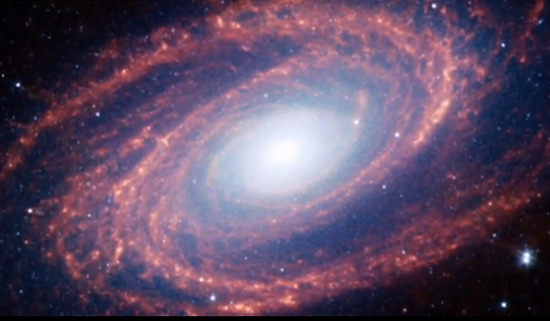Dec 28, 2016
Is this Libyan oasis the remains of a volcano?
If you quickly look at this picture you would think that it is taken on Mars, however the lake is a dead giveaway that it is on Earth. For those familiar with Electric Universe concepts, it bears all the marks of electrical activity.
The Libyan desert is a wasteland, that, with few exceptions, can support no human endeavors. The central portion is exceptionally dry, with rainfall occurring less than once every thirty years. It is so barren that NASA used it for testing the Viking lander project, since they thought it closely resembles conditions on Mars. There are few roads or tracks, just a blank spot on the map.
Previous Picture of the Day articles described the strange landscapes across Africa, as well as their anomalous attributes. Giant craters, deep cracks in the Earth, and Lichtenberg figures etched into the terrain all point to events that do not lend themselves to uniformitarian explanations.
There are other areas in the Sahara that defy consensus explanations. Near Waw an Namus are straight-sided trackways with scalloped edges, and twin ridges on either side (25.391018N 16.505696E, for example). There is no evidence for water erosion and there is no river running through the valleys. What creates dual-ridge channels with near vertical sidewalls and scalloped edges?
The dry gullies (wadis) and steep cliffs in Libya look like they were carved by floods after the last Ice Age. Conventional theories suggest that the glaciers melted and runoff from the coastal mountains carved a drainage system. The melt waters evaporated, leaving filigree-shapes that are said to be vestiges from a wetter era. The last Ice Age is supposed to have ended 15,000 years ago, so the sharpness of the cuts and the fine detail in the thousands of small canyons belie a watery birth.
Lichtenberg figures are fork-like shapes that lightning bolts make when they strike the Earth or some man-made material. Their unique configuration can be seen in acrylic blocks that are charged with thousands of volts at high amperage, leaving a tracery of the electrical pathway visible in the otherwise transparent plastic. It seems possible that lightning bolts of sufficient power could do the same thing to minerals in the Earth on a continental scale.
Martian topography demonstrates “erosion” patterns like those in Libya. The same multi-branched canyons, steep walls, flat bottoms, sinuous rilles and rims with scallop-shaped cutouts are so similar to those in the Sahara that transplanting Mars to Earth, or vise versa, would be undetectable.
Water? No. Volcanism? No.
It is time for another perspective on geology. Since planetary scientists witnessed comet fragments colliding with Jupiter, vast ionized plumes erupting from Io, and volcanoes spitting lightning, it seems reasonable to insist that theories involving fast-acting forces of change be considered along with those that might require millions of years.
Written by Stephen Smith from an idea submitted by Garry Maxfield













